Nevada Well Positioned for Unmanned Systems and Big Data
13 Jan, 2014
By Rachel Duran
Nevada is a well-known tax friendly pro-business state. It is true gaming and hospitality comprises the largest part of the economy at 23 percent; however, its diverse industry base provides broad opportunities.
Consider Nevada’s push in the unmanned systems industry. A statewide panel has responded to the Federal Aviation Administration’s request in regard to hosting a test site for unmanned systems. The FFA plans to establish six civil unmanned systems test sites across the country, with a decision expected by the end of 2013.
“Nevada has a number of assets to bring to the table and we feel have one of the best proposals out there,” says Steve Hill, executive director, Nevada Governor’s Office of Economic Development. Assets include one of the military’s centers for unmanned systems, located at Nellis Air Force Base, north of Las Vegas. The presence of the center has created a talent base with expertise in these systems.
State officials have also created the Nevada Institute for Autonomous Systems. “We feel Nevada can be a hub for ground-based systems and underwater systems as well,” Hill says. Nevada was the first state to pass legislation to support unmanned cars on the road.
Another asset is the proposed advanced manufacturing centerat the University of Nevada at Reno, with a focus on unmanned systems.
Nevada also has an abundance of air space. “We have been told the total amount of air space we have included in our proposal is more than the other 48 original proposals combined,” Hill says. What’s more, Nevada offers more than 300 flying days a year, which is difficult to achieve in other locations of the country.
Another emerging industry cluster in Nevada is big data analytics. The idea behind the FAA’s test sites are not only to control unmanned systems, but also to store the information the systems generate. “We have a strong technology infrastructure to do that,” Hill says. For example, the Desert Research Institute is a leader in the research of the nexus of water and energy. The institute has a proposal in to fund an applied innovation center, which is based on the Fraunhofer model in Germany. The effort would provide R&D contract services focused on big data analytics to businesses with products and services they would like to advance but lack the capacity in house to do so.
In other data analytics activities, the University of Nevada at Las Vegas is looking to partner with the Lou Ruvo Center for Brain Health, which has a partnership with the Cleveland Clinic and others to develop quantitative analysis on clinical trials. “Great work is being done but the data coming out of the trials requires analytics at a level that is only recently possible,” Hill says.
Industries and Innovations
In addition to big data and unmanned systems, Nevada’s industry clusters include manufacturing, logistics and distribution, IT, mining and water technology management.
“Our location is great, our infrastructure is solid,” Hill says. “Because we are a highly ranked place to do business it is a great launching point to serve the West Coast.” In the city of Henderson, part of the Las Vegas MSA, Panattoni Development Co. is developing the South15 Airport Center, a business park ideal for distribution and manufacturing. FedEx Ground is building a 300,000-square-foot facility, and another company is in plan review for a 100,000-square-foot facility. “We are also focused on headquarters locations that bring alongside manufacturing and assembly of components,” saysBarbra Coffee, manager, economic development/redevelopment, city of Henderson. “We are broadening our scope and working to send the message that Henderson is a great location for companies that are looking for a western location or headquarters.”
In regard to the state’s IT sector, activities span the gamut from startups to back office support to innovation and infrastructure type of organizations that supply the industry. A leading company in the cluster is Zappos.com, which has moved 1,500 employees to downtown Las Vegas. “Tony Hsieh [Zappos CEO] has invested energy and money into developing downtown Las Vegas into a tech innovation and company hub,” Hill says. “It is becoming a magnet for tech companies looking at Nevada.”
In mining activities, the northern part of Nevada continues to do well with sector initiatives, particularly in the Elko region. “When the unemployment rate in other areas of the state was approaching 14 percent, Elko and the mining areas of the state were around 4 percent unemployment,” Hill adds.
In regard to water technology efforts, Nevada’s Desert Research Institute’s expertise is vast, as is the knowledge at the state’s universities. “We formed a water center of excellence earlier this year [2013] that brings together the expertise in each of these institutions, and the Southern Nevada Water Authority, which is in partnership with IBM and its smarter plant and smart water focus,” Hill says.
Talent and Education
Henderson’s officials are building on the base of 12 institutions of higher learning in the community to expand the health care, life sciences and biotech sectors. A proposed project is Union Village, which would be an integrated health care campus that would feature an anchor 600-bed hospital, and attract tenants such as a children’s hospital or cancer hospital. Officials are also exploring real estate solutions to provide business incubation facilities.
In Mesquite, which is Clark County, businesses can draw their workforce from a 45-mile radius. “We have a high level of expertise in the area based on a lot of retirees living here,” says Gaye Stockman, president and CEO, Mesquite Regional Business Inc., “They are excellent trainers and educators and I think that is why Mesquite is progressive in its vision for the future. Our community is an active well rounded small community, with a thriving arts community.”
What’s more, the branch campus for the College of Southern Nevada has created a forklift training program to serve Mesquite. Mesquite is located on Interstate 15 between Los Angeles and Salt Lake City, which is attractive to logistics operations. “We have hundreds of acres available for warehouse and distribution,” Stockman notes. “We have smaller light manufacturing buildings ready to move in.”
Assets
A component of Nevada’s incentives’ arsenal is the Knowledge Fund, which was created to drive commercialization of innovation and technology. The grant funds capitalize on research assets, and support the hiring of distinctive researchers.
The most recent legislative session also passed an energy economic development rate to provide discounts for manufacturers. The rate takes effect this month, supporting the expansion and/or attraction of manufacturing firms.
Along those lines, in 2011, Nevada’s officials passed the Catalyst Fund, a deal closing fund. Hill says over the past year the state has made 10 deals with companies that have brought 2,600 jobs to the state. “It has allowed us to get into a level of discussion we haven’t been able to do in the past,” Hill says.
At the local level, Coffee says Henderson has five redevelopment areas. “Of note are the downtown redevelopment area and the east side redevelopment area,” she says. “In addition, in the downtown is the Water Street District, which is home to city’s public facilities. For this area we have some incentives, one of which is the Urban Lounge incentive, where we are trying to create more density and mix of uses.”
An area of the state which is primed for mixed-use development is Lincoln County, which is the county located northeast of Las Vegas and Clark County. Lincoln County is 10,600 square miles, which is larger than some U.S. states. Ninety-eight percent of the county’s land area is federal land.
“The Bureau of Land Management [BLM] has identified 700, 000 acres of piñon and juniper woodlands that need to be thinned, which yield six to seven tons of biomass per acre,” says Mike Baughman, executive director, Lincoln County Regional Development Authority. “Four to five million tons of biomass will come off those lands. We are trying to identify industrial users of the biomass.”
Among Lincoln County’s many development sites is the 35,000-acre Coyote Springs, which has $200 million of infrastructure in place. The mixed-use site features an 18-hole golf course. There are 14,000 acres designated for renewable energy development, primarily solar. The site is adjacent to the 500 kV One Nevada Line, an electrical transmission project, which is owned by NV Energy.
The 13,500-acre Toquop development area is located 60 minutes east of Las Vegas, north of Interstate 15, and adjacent to the city of Mesquite. The developers are conducting plans for this greenfield site. In proximity is the Toquop energy project, which is an 85 percent permitted, 1,100 megawatt natural gas fired project, Baughman says.
The Dry Lake Valley North Solar Energy Zone, designated by the BLM, is a 25,000-acre site adjacent to the 500 kV NV Energy transmission line. It is also located next to an existing 69 kV transmission line, and a proposed 38 Kv line. “The BLM designated this area to facilitate fast track solar energy development,” Baughman says. “We are just now starting to entertain projects.”
Lifestyle
Baughman says Lincoln County offers businesses a rural location with proximity to a major metro area. “We have a lot of outdoor amenities,” he says. This includes five state parks, which range in elevation from 3,000 feet to 9,000 feet. What’s more, 7,000 acres in the county are federally designated as wilderness areas.
In Mesquite, the community is home to seven championship golf courses, and the home of a Del Webb retirement community. Mesquite is located near the border of Arizona, and between Las Vegas and St. George, Utah. “We have the quality of life that you want with access to all the amenities metro communities have.”
Hill says in addition to the quality of life amenities, Nevada’s business climate is consistently ranked high in many indicators. “There are broad opportunities in Nevada, and anyone looking at expanding to the western part of the United States really should look at us.”
More Info
www.hendersonmeansbusiness.com
Illustration by Theeradech Sanin at Free Digital Photos.net
Down To Business
- Nevada does not collect corporate or personal income taxes, nor inventory, franchise, unitary or special intangible taxes.
- Nevada is less than one day’s drive to 60 million customers and five major U.S. ports serving the Pacific Rim.
- Many Nevada residents speak more than one language, with a particularly strong representation of Spanish and Chinese speaking residents.
- In 2012, Nevada ranks third in the Tax Foundation’s Business Tax Climate Index. Here is how nearby states ranked: California-48; Arizona-27; Idaho-21; Oregon-13, and Utah-10.
Outdoors and Recreation
Nevada means “snow-covered” in Spanish, and with more than 33 feet of snow annually at some ski resorts, it delivers. Unlike other ski destinations in the West, Nevada keeps the excitement going 24 hours a day. With more than 24,000 acres of skiing at 18 resorts, Lake Tahoe is one of the premier ski destinations in the world. Source: www.travelnevada.com.
Related Posts
-
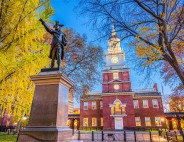
PENNSYLVANIA: Ready to Grow with You
-
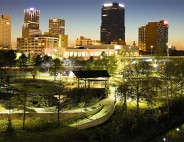
Arkansas: Melting Pot of Industries
-
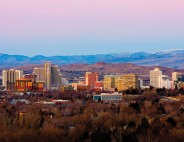
Nevada: Technology Diversifying & Advancing Economy
-
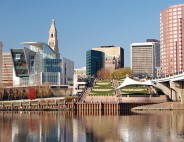
Connecticut: Strong in Manufacturing & Tourism
-

Ontario: A Top Economic Leader in North America
-
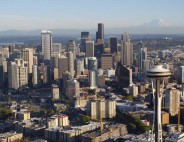
Innovation and Connections Energize Washington State
-

Governor Funds the Rebuilding of Rhode Island
-

Illinois Seeing Growth from Its Quality Workforce
-
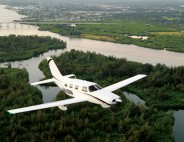
Florida: Aerospace Flies Higher, Jobs Take Off
-

Wyoming Grows Technology and Innovation Assets










